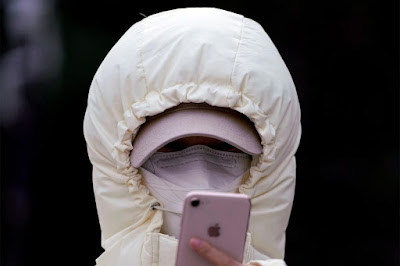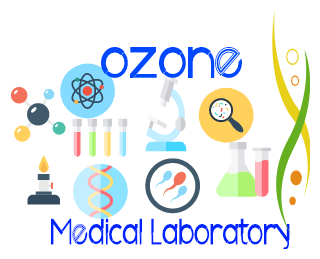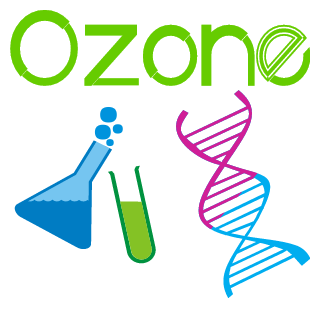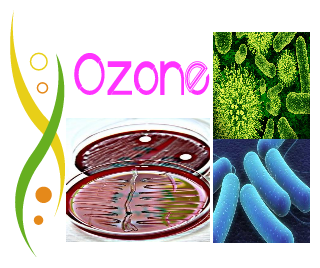1.
Which of the following is a confirmatory test for syphilis:
a.
RPR
b.
FTA-ABS
c.
VDRL
d.
Wasserman
Test
2.
The most likely cause of an elevated potassium level in an
apparently normal individual is:
a.
Contamination
b.
Hemolysis
c.
Acute
renal failure
d.
Interfering
substances
3.
Metabolic acidosis is characterized by:
a.
Increased
pCO2
b.
Hypoventilation
c.
Low
pH
d.
High
pH
4.
The Quelling test is useful for which of the following :
a.
Differentiate
between Staphylococcus and Streptococcus
b.
Serological
typing of Streptococcus pneumonia
c.
Isolation
of various strains of Staphylococcus
d.
Isolation
of various strains of Streptococcus
5.
The relative centrifugal force of a centrifuge may be affected
by all except:
a.
Time
b.
Radius
of head
c.
RPM
6.
Standard precautions means that:
a.
Known
infectious patients must be handled with extraordinary care
b.
Mask,
gloves and gowns should be worn in all hospital patient's rooms
c.
All
specimens must be handled as if they are hazardous and infectious
d.
Always
wash your hands before drawing a patient's blood sample
7.
RDW is an indication of which of the following:
a.
Variability
of RBC volume
b.
Poikilocytosis
c.
Macrocytosis
d.
Microcytosis
8.
Group A beta-hemolytic streptococci are best characterized by
which of the following:
a.
Positive
cAMP test
b.
Optochin
sensitivity
c.
Bile
esculin hydrolysis
d.
Bacitracin
sensitivity
9.
The turbidity of the bacterial inoculum of a standard disc
diffusion (Kirby-Bauer) susceptibility test is:
a.
0.1 McFarland Standard
b.
0.5
McFarland Standard
c.
1.0 McFarland Standard
d.
2.0 McFarland Standard
10.
Which of the following is not a common support medium used in electrophoresis
techniques:
a.
Cellulose
acetate
b.
Agarose
gel
c.
Polyacrylamide
gel
d.
Dextrose
11.
The normal range for urine pH is:
a.
4.6
to 8.0
b.
5.0
to 6.0
c.
7.0
to 8.0
d.
none
of the above
12.
Which of the following is not a likely cause of an abnormal
thrombin time (TT):
a.
Fibrin
split products
b.
Heparin
c.
Aspirin
d.
Dysfibrinogenemia
13.
What is the eight hour occupational exposure limit for a
chemical called?
a.
Threshold
limit value
b.
Threshold
time limit
c.
Time
limit value
d.
Short
term limit
14.
Spherocytes are associated with which two of the following
conditions:
a.
Hereditary
spherocytosis
b.
Autoimmune
hemolytic anemia
c.
Thalassemia
d.
Iron
deficiency
e.
Both
a & b
15.
The generally accepted age range for homologous blood donation
is:
a.
21
– 65 years
b.
17
– 65 years
c.
15
– 65 years
d.
Over
the age of 14 years
16.
Which of the following organisms in most frequently associated
with endocarditis:
a.
Viruses
b.
Neisseria
c.
Staphlyococci
d.
Streptococci
17.
Ionized calcium is most commonly measured using which of the
following method:
a.
Flame
photometry
b.
Color
complex formation between calcium and o-cresolphthalein
c.
Atomic
absorption
d.
Calcium
ion selective electrodes
18.
The prozone effect ( when performing a screening titer) is most
likely to result in:
a.
False
positive
b.
False
negative
c.
No
reaction at all
d.
Mixed
field reaction
19.
Which of the following tests on amniotic fluid would be included
when assessing fetal maturity:
a.
Alpha
fetoprotein and bilirubin
b.
L/S
ratio and bilirubin
c.
Alpha
fetoprotein and L/S ratio
d.
Creatinine
and L/S ratio
20.
Therapeutic hemapheresis may be used to treat all of the
following except:
a.
Acute
Guillian-Barre syndrome
b.
Paraproteinemia
c.
HIV
infections
d.
Cryoglobulinemia
21.
A smear that is prepared from equal parts of methylene blue and
whole blood will be used for:
a.
WBC
differential
b.
Platelet
estimates
c.
RBC count
d.
Reticulocyte
count
22.
Gram positive organisms
a.
resist
acetone-alcohol de colorization
b.
always
decolorized by acetone alcohol
c.
resist
staining by crystal violet
d.
readily
stain with safranin in the Gram stain
23.
Which of the following are not appropriate indications for the
use of fresh frozen plasma:
a.
Volume
expansion
b.
Severe
bleeding in the presence of significantly elevated PT secondary to vitamin K deficiency
c.
Replacement
component after plasma exchange in patients with TTP or HUS
d.
Dilutional
coagulopathy with significant active bleeding, and PT and PTT twice normal
24.
If a pipette is labeled (TC) " to contain " you would
do the following:
a.
Drain
pipette, but not blow out
b.
Drain
contents then blow out or rinse
c.
Drain
to last mark on pipette
d.
Do
not consider the meniscus when filling
25.
The concentration of sodium chloride in an isotonic solution is
:
a.
8.5
%
b.
0.85
%
c.
0.08
%
d.
1.0
molar
26.
The positive square root of the variance of a set of values is
called:
a.
Median
value
b.
Mean
value
c.
Standard
deviation
d.
Coefficient
of variation
27.
Patients with antibody to the following antigen are immune to
Hepatitis B:
a.
Core
antigen
b.
Surface
antigen
c.
e
antigen
d.
Delta
antigen
28.
Which one of the following is not a true statement about
Chlamydia:
a.
Requires
tissue culture for growth
b.
Is
a true bacterium
c.
Is
an obligate intracellular parasite
d.
Has
the nuclear structure of a virus
29.
Which of the following species are gram positive:
a.
Streptococcus
b.
Neisseria
c.
Listeria
d.
Lactobacillus
30.
Which of the following media is commonly used when performing
the Kirby-Bauer disk diffusion
a.
Chocolate
agar
b.
Mueller-Hinton
agar
c.
Thayer-Martin
agar
d.
MacConkey
agar
31.
Which of the following best defines "sensitivity":
a.
The
percentage of patients with a disease who will have a positive test
b.
The
percentage of patients without a disease who will have a negative test
c.
The
percentage of patients with a disease who will have a negative test
d.
The
percentage of patients without a disease who will have a positive test
32.
What percentage solution of sodium hypochlorite (bleach) is
recommended as a routine laboratory disinfectant:
a.
5
%
b.
10%
c.
15%
d.
20%
33.
In HDN which of the following antigen-antibody reactions is
occurring:
a.
Maternal
antibody against fetal antibody
b.
Maternal
antigen against fetal antibody
c.
Maternal
antibody against fetal antigen
d.
Maternal
antigen against fetal antigen
34.
Carbon dioxide is predominately found in blood in the form of:
a.
Bound
CO2
b.
Bicarbonate
ions
c.
Sodium
carbonate
d.
PCO2
35.
What condition is indicated by the following blood gas results:
Bicarbonate = 32 mmol/L (Normal = 22 - 26 mmol/L); pCO2 = 65 mm Hg (Normal = 35
- 45 mmHg); pH = 7.28 (normal = 7.35 - 7.45)
a.
Healthy
condition
b.
Uncompensated
metabolic acidosis
c.
Compensated
metabolic acidosis
d.
Uncompensated
respiratory acidosis
36.
In a normal CSF the protein concentration as compared to that in
the serum is generally:
a.
Less
than 50%
b.
Less
than 30%
c.
Less
than 10%
d.
Less
than 1%
37.
Which of the following staining methods would you use to
demonstrate the metachromatic granules of Corynebacterium diphtheriae:
a.
Acid
fast
b.
Gram
c.
Trichrome
d.
Methylene
blue
38.
Which of the following are not considered normal flora of the
gastrointestinal tract:
a.
Lactobacillus
b.
Clostridium
c.
Peptostreptococcus
d.
Shigella
39.
All of the following cellular antigens are important to an immunohematologist
except:
a.
Blood
group antigens
b.
Histocompatibility
antigens
c.
Haptens
d.
Autoantigens
40.
Which one of the following statements about anti-A1 is false:
a.
Anti-A1
is a naturally occurring antibody that is usually clinically insignificant
b.
Anti-A1
reactive at 37o C can sometimes destroy transfused A1 positive cells
c.
A1
and A2 occur in 80 and 20 percent of the population, respectively
d.
A2
cells react with Dolichos biflorus lectin
41.
Which one of the following organisms do not usually stain with
an acid-fast stain, or one of its variants:
a.
Mycobacterium
b.
Cryptosporidium
c.
Actinomyces
israelii
d.
Nocardia
42.
Which of the following would be the most appropriate temperature
for long term storage of viral cultures:
a.
4°
C
b.
-20°
C,
c.
-70°
C
d.
Room
temperature
43.
Which of the following would be the most appropriate method to
confirm a positive protein from a urine dipstick:
a.
Immunoelectropheresis
b.
Heat
precipitation
c.
Sulfosalicylic
acid precipitation
d.
Protein
electrophoresis
44.
Circulating organic iodine is found primarily in the form of:
a.
Triiodothyronine
b.
Parathyroid
hormone
c.
Thyroglobulin
d.
Thyroxine
45.
Which of the following conditions would be suggested by a marked
rise in alkaline phosphatase, jaundice, and a moderate rise in ALT:
a.
Cardiovascular
disease
b.
Hemolytic
anemia
c.
Post-hepatic
obstruction
d.
Renal
failure
46.
Which of the following organisms is the most common cause of
acute cystitis:
a.
Escherichia
coli
b.
Klebsiella
pneumoniae
c.
Chlamydia
trachomatis
d.
Staphylococcus
epidermidis
47.
A fluorometer operates on which of the following principles:
a.
Measures
amount of light absorbed by a given compound
b.
Measures
changes in emitted wavelength of light after absorption by an analyte
c.
Measures
amount of light scattered by the analyte in question
d.
Measures
light emitted at two or more wavelengths
48.
Which of the following statement about synovial fluid is true:
a.
Markedly
elevated neutrophils always correspond to bacterial joint infection
b.
Patients
with gout involving joints will have markedly elevated neutrophils in their synovial
fluid
c.
Fungal
joint infections have synovial fluid with numerous lymphocytes
d.
Tuberculous
joint infections have synovial fluid with numerous plasma cells
49.
Rheumatoid factor reacts with which the following :
a.
Fc
fragment of IgM
b.
Fab
fragment of IgM
c.
Fab
fragment of IgG
d.
Fc
fragment of IgG
50.
Gamma irradiation of cellular blood components is required in
which of the following situations:
a.
Prevent
post-transfusion purpura
b.
Prevent
Graft-Versus-Host (GVH) disease
c.
Sterile
components
d.
Prevent
non-cardiogenic pulmonary edema
51.
Patients with which of the following conditions would benefit
most from washed red cells:
a.
Warm
autoimmune hemolytic anemia
b.
Cold
autoimmune hemolytic anemia
c.
Elevated
serum potassium
d.
Multiple
red cell alloantibodies
52.
Cryoglobulin testing can be used to:
a.
Screen
for rheumatoid arthritis,
b.
Diagnose
syphilis
c.
Screen
for systemic lupus erythematosus (SLE)
d.
Help
diagnose Raynaud's syndrome
53.
Which is arranged from least mature to most mature:
a.
Myeloblast,
Myelocyte, Band, Neutrophil, Metamyelocyte, Promyelocyte, Stem Cell
b.
Stem
Cell, Myeloblast, Promyelocyte, Myelocyte, Metamyelocyte, Band, Neutrophil
c.
Stem
Cell, Promyelocyte, Metamyelocyte, Neutrophil, Myeloblast, Myelocyte, Band
d.
Neutrophil,
Band, Metamyelocyte, Myelocyte, Promyelocyte, Myeloblast, Stem Cell
54.
The measurement of total glycosylated hemoglobin A1c is an
effective means of assessing the average blood glucose levels:
a.
Over
the past 1-2 weeks
b.
Over
the past 2-3 months
c.
Only
the past 24 hours
d.
Only
the past 12 hours
55.
Bacitracin susceptibility is useful for which two of the
following:
a.
Distinguishing
Staphylococci from micrococci
b.
Presumptive
identification of Group A streptococci
c.
Identification
of Haemophilus
d.
Identification
of Neisseria
e.
Both
a & b
56.
Which of the following is the proper temperature to use when
crossmatching in the presence of a cold antibody:
a.
37
degrees Celsius
b.
25
degrees Celsius
c.
15
degrees Celsius
d.
4
degrees Celsius
57.
When a urine specimen cannot be cultured immediately it may be:
a.
Stored
at room temperature for up to 8 hours
b.
Stored
in freezer for up to 24 hours
c.
Neisseria
d.
Stored
at 4° C for up to 24 hours
58.
Platelet should be stored
at what temperature :
a.
1-6
degrees Celsius
b.
10-16
degrees Celsius
c.
20-24
degrees Celsius
d.
34-37
degrees Celsius
59.
The recommended temperature/time/pressure for routine steam
sterilization of media is:
a.
121°
C for 8-10 minutes at 10 psi
b.
121°
C for 12-15 minutes at 15 psi
c.
220°
C for 8-10 minutes at 10 psi
d.
220°
C for 12-15 minutes at 15 psi
60.
Which of the following casts might be found in the urine of a
healthy individual after strenuous exercise:
a.
Epithelial
cell casts
b.
Hyaline
casts
c.
Granular
casts
d.
Waxy
casts
Answer key with explanations
1. a The FTA-ABS is
not intended for use as a screening test. It should only be used to
differentiate between true positives, false positives, and in late or latent
syphilis.
2.b Hemolysis could result from improper specimen
collection technique, or improper storage.
3. c Metabolic acidosis is the result of either: 1)
accumulation of abnormal levels of organic acids, often secondary to diabetic
ketoacidosis, or lactic acidosis, 2) excessive loss of bicarbonate as in severe
diarrhea, or 3) reduced excretion of acids as in renal failure. All these
conditions result in a decrease in pH. The body compensates by hyperventilating,
and lowering pCO2, in an attempt to restore normal pH, resulting in
a compensated or partially compensated metabolic acidosis.
4. b Capsular
swelling results from the addition of specific capsular antibody to an isolate
of the organism. This test is generally not required for routine diagnosis.
5. a
6. c
7. a Red Cell Distribution Width (RDW) is a
mathematical expression of size variation used to quantify anisocytosis. The
higher the RDW, the greater the anisocytosis. RDW is increased in iron
deficiency, and tends to be normal in thalassemia. Increased RDW may be an
early indication of iron deficiency, where it may precede the onset of
microcytosis.
8. d Group B streptococci are characterized by a positive cAMP test.
Streptococcus pneumoniae is characterized by Optochin susceptibility
Enterococci are positive by the bile-esculin test.
9. b
10.d Cellulose acetate and
agarose gels are most commonly used in the clinical laboratory.
11. a
12. c
13. a
14. e Spherocytes result from
removal of small amounts of erythrocyte membrane, with resultant reduction in
surface to volume ratio. This may occur in the reticuloendothelial system, as
in hereditary sherocytosis and autoimmune hemolytic anemia, or may be due to
direct injury of red cells, as in patients with severe burns.
15. b Prospective donors over 65
may be accepted at the discretion of the blood bank physician. Many donor
centers safely involve elderly donors in their collection programs.
16.d
Various
Streptococci are the most common causes of endocarditis, although many other organisms
have been implicated.
17. d
18. b
Prozone effect
(due to antibody excess) will result in an initial false negative in spite of
the large amount of antibody in the serum, followed by a positive result as the
specimen is diluted.
19. d
20.c Therapeutic Hemapheresis is the process of
removing a harmful blood component, and returned the remaining blood components
to the patient. The examples sited above are indications for plasmapheresis, in
which plasma containing a harmful substance is removed from the body, and
replaced with FFP or other volume expanders, depending on the patient's condition.
21.d
Remaining nuclear fragments found in reticulocytes take up the
methylene blue dye.
22.a Gram positive organisms resist decolorization with
acetone-alcohol. Gram negative organisms are decolorized, and subsequently
stain with safranin.
23. a Since each unit of fresh
frozen plasma (FFP) carries with it the risk of transmitting blood borne pathogens,
and other products which do not carry this risk are available, FFP should not
be used as a volume expander.
24.b "TC" means the
total volume contained in the pipette - you must blow out to remove total contents.
25. b Isotonic or normal saline is a 0.85 % solution of sodium chloride
in water.
26. c
27. b
28. d
29. d
30. b
31.a Sensitivity refers to the percentage or fraction of patients with
a given disease in a given population who will have a positive test.
32. b
33. c
34. b
35. d The normal pH of blood is 7.40. In order for most metabolic
processes to take place, the pH must remain within a narrow range close to this
value. The range is usually defined in adults as 7.35-7.45. If blood pH falls
below 7.35, the blood becomes too acidic (acidosis). If blood rises above 7.45,
the blood is too alkaline (alkalosis). As blood pH decreases, the kidneys will
retain bicarbonate (HCO3-) from the glomerular filtrate; therefore, bicarbonate
is increased. However, in this case, the increased HCO3 could not compensate
for the markedly elevated pCO2 (the respiratory component) and the condition
that results is uncompensated respiratory acidosis.
36.d
Normal ratio of serum to CSF Protein is about 200 to 1, or less
than 1%. Elevation of CSF total protein is a nonspecific finding, but usually
indicates some type of disease involving the brain or meninges.
37.d
Methylene blue stain can be used to visualize the metachromatic
granules that are characteristic of C. diphtheriae.
38.d Shigella and Salmonella are not found as normal flora in the
gastrointestinal tract.
39. c
A hapten is an incomplete antigen.
40. d Dolichos biflorus lectin
has anti-A1 specificity.
41.c
42. c
Cultures can
be stored at either -20° or -70°, but -70 is preferred for long term storage.
43. c
44. d Iodine circulates as thyroxine (T4) and to and to a lesser extent
as Triiodothyronine (T3).
45. c Post-hepatic obstruction is characterized by a marked increase in
conjugated bilirubin.
46. a
47. b
48. b
49. d
50.b Transfusion related Graft-Versus-Host disease is a rare condition
usually following transfusion of patients whose immune system is severely
compromised. It occurs when T lymphocytes present in the transfused unit
replicate and attack the tissues of the recipient. Gamma irradiation prevents
this condition by inactivating T lymphocytes in the donor unit. Gamma irradiation
of cellular blood components is required when: 1.The donor is a blood relative
of the recipient, 2. intrauterine transfusions, 3. The recipient has a selected
immunodeficiency condition, 4. The recipient has received a bone marrow
transplant.
51. c
Washing not only reduces the number of leukocytes and platelets
that are often responsible for febrile reactions, but also eliminates
anticoagulants, ammonia, lactic acid, and potassium.
52. d Cryoglobulin is an abnormal serum protein with a unique ability to
precipitate when exposed to cold temperatures. Cryoglobulin is present in
Raynaud's syndrome.
53. b
54. b The concentration of hemoglobin A1c is directly proportional to
the average plasma glucose level that the RBCs are exposed to during their 120
day life span. The glycosylated hemoglobins result from glycosylation of
serine, asparagine, and hydroxylysine residues in hemoglobin. There are three
glycosylated hemoglobins: Hb A1a, Hb A1b, and Hb A1c, of which Hb A1c
constitutes 80%. Most methods measure total gycosylated hemoglobin, which has a
high degree of correlation to Hb A1c, and may be reported as such after making
the appropriate conversion.
55. e
Staphylococci
are resistant to bacitracin while micrococcus are sensitive. Group A betahemolytic
Streptococci are sensitive to bacitracin, while most other Groups are
resistant.
56. a
Most antibodies that are inactive at 37 degrees Celsius, and
active only below 37 degrees Celsius (i.e. cold reactive antibodies), are of
little clinical significance.
57. d
58.c Platelets should be stored at 20-24 degrees Celsius with
continuous gentle agitation. They should be infused within 4 hours after the
seal on a platelet unit is broken.
59. b
60. b Hyaline casts may be seen in healthy individuals particularly
after exercise.




Comments
Post a Comment